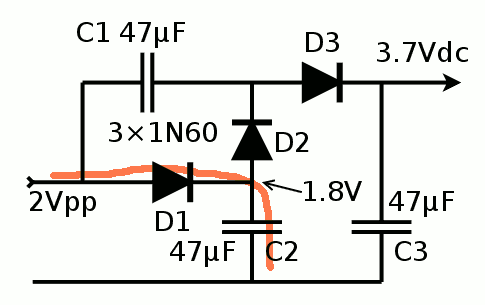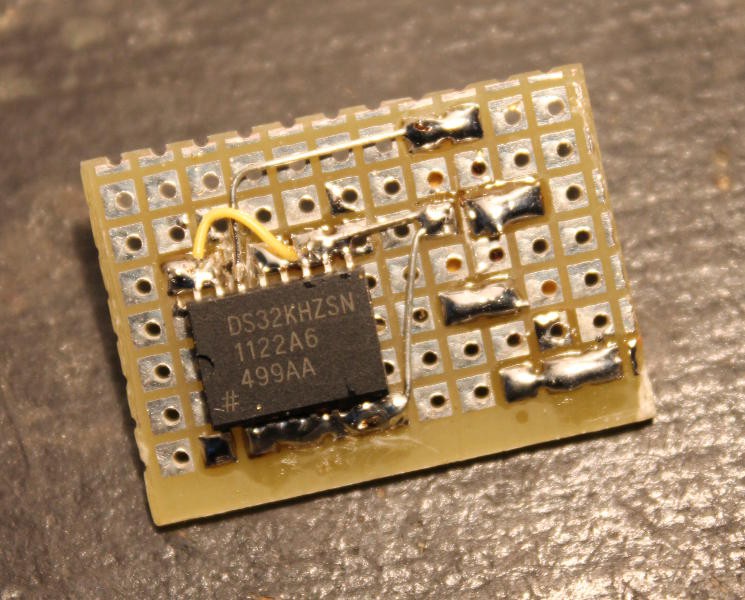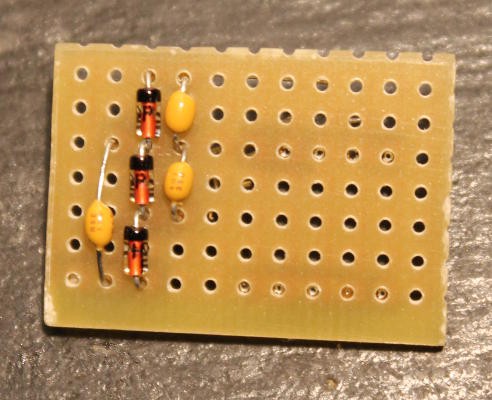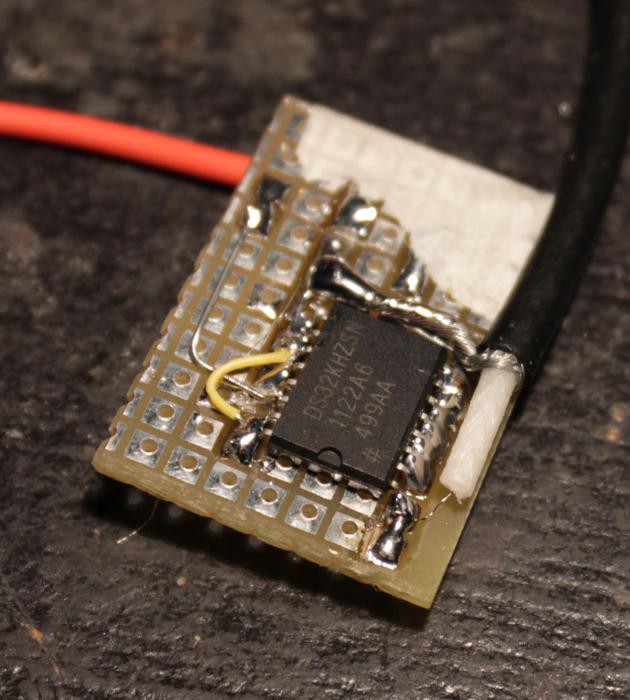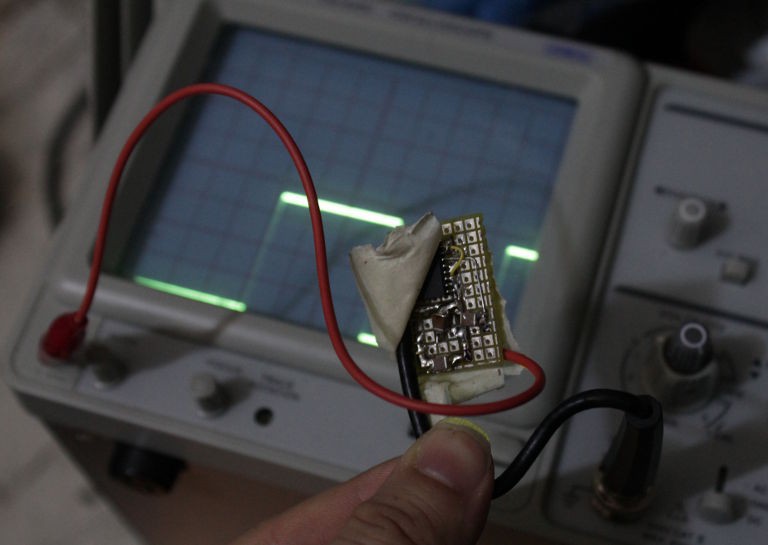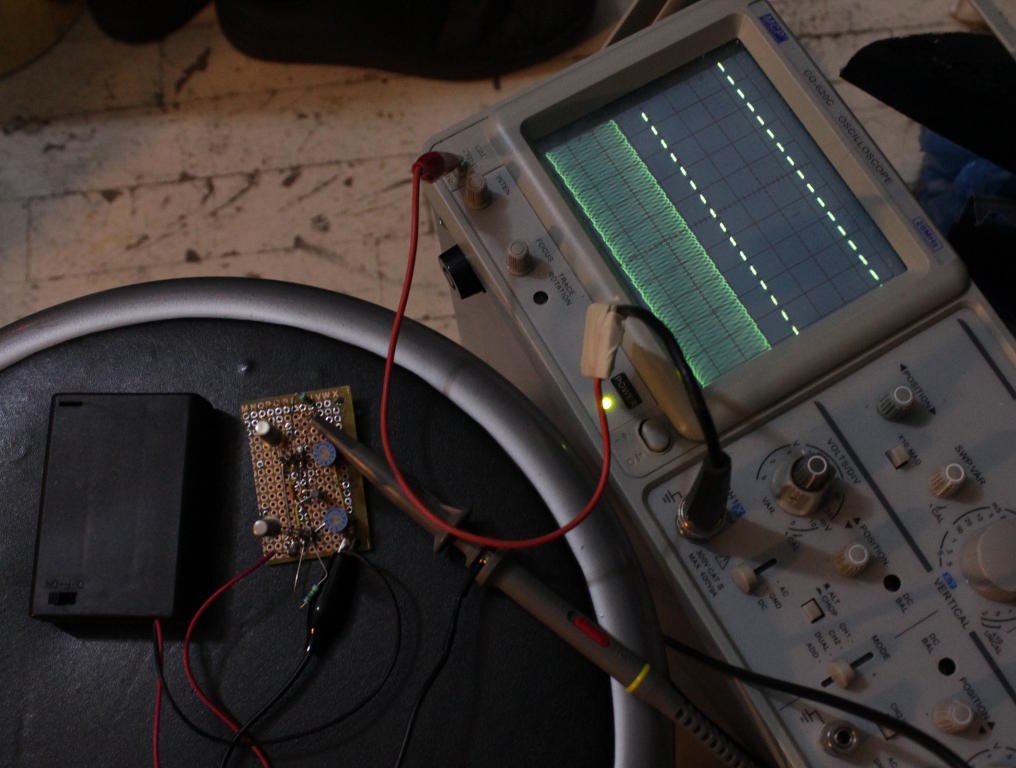-
Tuning for a different frequency
04/19/2016 at 23:57 • 0 commentsI thought that all was said and done about this project, but then the tubes came and the choice of the different frequency (18KHz) creates new questions, until I receive that Rb frequency standard.
I just realised that I could simply find an existing quartz with a multiple of the desired frequency and divide it with one 74HC4040 (I have mutliple reels of these, don't ask me why)
So what frequency is easily divided by 18000 ? 18.432MHz gives a perfect division factor of 1024. However this consumes a LOT of current (in the 10mA range).
A lower frequency could work but I don't have 9.216, 4.608, 2,304 or 1.152MHz in stock.
I have a bunch of 3.6864MHz and I built an oscillator there : https://hackaday.io/project/8121-discrete-yasep/log/26870-clock-generation-circuit I measured a 1.6mA power consumption, which is a bit too much. Given my latest experiments, can I draw less ?
The division ratio is also a little bit "odd", giving 204.8. The idea so far is to show 5 cycles on the scope, at 18000/5=3600Hz (277µs). The 4040 will divide by 3686400/3600=1024. So this design will be actually a 3600Hz generator...
For more flexibility, jumpers will select the frequency. But now the most critical aspect is to reduce the power consumption and ripple. So now is the time to create a new low-power oscillator, using all the squillz I earned with the other crystal oscillators.
-
Charge pump design
04/10/2016 at 22:28 • 0 commentsI wouldn't have thought about this project if I wasn't actively developing circuits using Germanium parts. They have a very low switching voltage, around 0.2V, unlike the silicon diodes (0.6 to 0.7V). This makes energy harvesting possible and this was essential in the age of crystal radios...
This low drop is also useful to extract small current from low voltage signals. Germanium diodes (the "detector" type) can't handle much current (20 to 40mA peak max) but there the losses are minimal: if we consider the first third of the charge pump (made of D1 and C2), the efficiency is about 90% (0.2V of drop for a 2V signal).
![]()
This first stage of "simple rectification" is necessary to provide a first "base" voltage of 1.8V for the actual charge pump. The actual elevation of voltage comes from C1 but it can't work if it starts from 0V.
Let's now consider that after a few cycles, C2 is fully charged. When the input is low, C2 can't discharge through D1 (we'll ignore the leakage currents which was barely measurable in a https://hackaday.io/project/10698-clockwork-germanium/log/35373-germanium-diodes)
So there is a difference of voltage between the electrodes of C1. When a rising edge comes, the difference remains, which "pulls" the anode of D2. Since this is the conducting direction, current flows though D1 and D2, effectively charging C1 (and C3 through D3, the last recitification stage).
When the input signal falls, D3 prevents the discharge of C3 and D2 prevents the current from going back. Charges are trapped at 2× the input voltage !
-
Power dips, NOFIX
04/10/2016 at 18:14 • 2 commentsWhile using the thingie, I noticed dips in the traces.
At first I thought is was a bad contact but I noticed it came back regularly. I vaguely remembered the datasheet that says (quoting)
"The DS32kHz module contains a quartz tuning-fork crystal and an IC. When power is first applied, and when the device switches between supplies, the DS32kHz measures the temperature and adjusts the crystal load to compensate the frequency. The power supply must remain at a valid level whenever a temperature measurement is made, including when V CC is first applied. While powered, the DS32kHz measures the temperature once every 64 seconds and adjusts the crystal load."
Said datasheet gives a typical consumption of 450µA (half a milliamp) which is 100× more than the average consumption (about 5µA). This explains the dips of the traces but also why I had to add the 47µF capacitors ! The 1/2mA peak appears during power-up and it didn't let the charge pump rise enough.
This is now solved with the large capacitors with no increase in complexity.
So yes, this circuit won't be able to supply 1mA :-)This dip (about 1/5s long) is not annoying enough to require a fix since the trigger still holds. Which is all I asked in the first place. But without this dip, I wouldn't have looked deeper in the datasheet to look at the current drawn during temperature recalibration...
-
Assembly
04/10/2016 at 16:04 • 0 commentsI forgot to post pictures of the circuit before it gets wrapped/protected.
The construction is really easy and the parts cost is negigible. Beginners can make their own circuit for a few dollars at most.
The 1N60 could be confused with bland 1N4148 but their characteristics are different. The really lower voltage drop is essential to make this work !
Soldering the wires was more delicate though. The coax' core is fragile, a single thin strand that breaks easily. The board must be physically rugged.
The first attempts were inconclusive : I saw a 32KHz signal hashed by 1KHz blanks. The diagnosis was easy to reach : the DS32KHZ needs a bit more current than I thought. I dug again in my parts collection and chose 3 SMD 47µF /6V capacitors (that's about 20µF effective at 3.5V)
Here it is, with the added capacitors, outputing a solid 3.6V square wave:
Now this thingie is used to tune a Germanium-based Xtal oscillator. Let's say it's very convenient !
And the wires are long enough to reach the other side of the scope, where the external trig input is located.
-
ScoPower in action
04/10/2016 at 07:03 • 0 commentsOnce the power supply question solved, the system works very well, is practical and useful for my Xtal tuning needs :-)
-
Efficiency
04/10/2016 at 05:14 • 0 commentsThose 1N60 are working great !
Just by touching the crocodile clamp, it generates 1.3V (yes there is a strong 50Hz induction here).
Is that an idea for ambient power harvesting ?
ScoPower
You know that calibration point on your 'scope? Well actually it's a tiny power supply. Here is the adapter and it's cheap!
 Yann Guidon / YGDES
Yann Guidon / YGDES